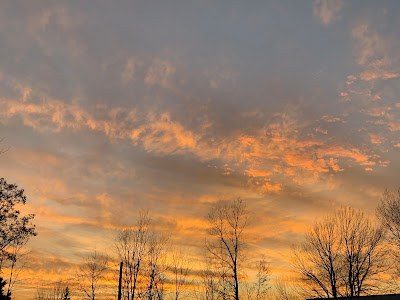 |
| It's been so warm for the season in St. Albans, Vermont that some of my daffodil shoots are unfortunately coming up. A warm storm today and tomorrow will keep things oddly springlike. |
It's not breaking any records, but it's still relatively significant. It's a "kitchen sink" type of storm, as some people have noted, as it's bringing everything but that mentioned kitchen sink.
There's the risk of severe storms, even a couple of brief tornadoes along the immediate East Coast from the Carolinas all the way to southern New England.
Strong winds will also buffet the New England coast. Winter storm warnings are up areas near the shore Lake Erie in for northern Ohio, Pennsylvania and New York.
Some snow could fall as far south as Tennessee and northern Alabama and Georgia. Heavy snow is likely in the high elevations in the Smoky Mountains of western North Carolina.
Here in Vermont, things look inclement with this storm, but nothing extreme. Also, it will stay warm. So much for that plunge into winter I hinted at last week. It ain't happening.
The biggest issue with this storm is the risk of strong downslope winds along the western slopes of the Green Mountains later today and tonight.
Sometimes, you get really damaging local gusts in the 70 to 90 mph range with the storm systems that favor these western slope winds. This time, it doesn't look that bad. Still, some places there could gust over 50 mph, raising the risk of scattered power failures.
A steady rain will move in early this afternoon and continue into the evening. It will be very warm for this time of year tonight, especially west of the Green Mountains. Temperatures will rise to near 50 degrees by late this afternoon, and stay there overnight.
You'd think Tuesday will be super warm after such a balmy night, but by then, colder air aloft with the core of the storm will start to move overhead. Tuesday will still be awfully warm for the first day of December with highs reaching the upper 50s for many of us. Those readings will start to fall off during the afternoon, though.
Actually, those temperatures and the weather conditions - bursts of sun mixed with bursts of rain from showers - will remind you of April, not December.
It's been a warm late fall, so warm in fact that some of my daffodils in St. Albans, Vermont are starting to sprout again. Uh-oh.
It will be cooler through the end of the week and into the weekend, but it will still be a couple degrees milder than average. Something close to normal December weather is likely next week, but it won't be brutally cold. Just winterish.

























